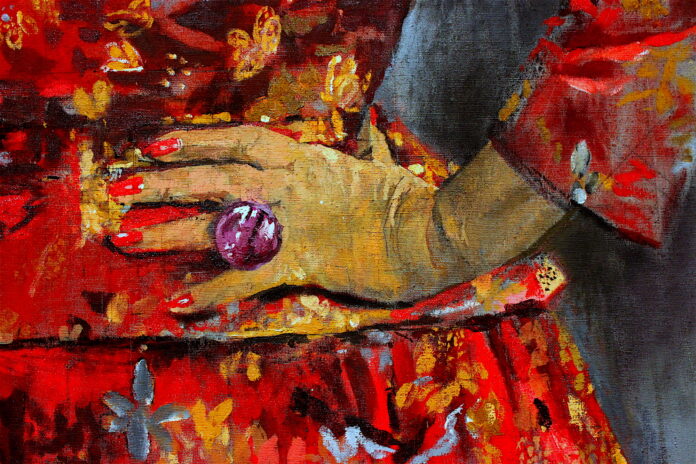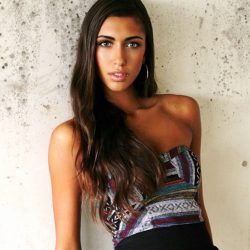
Picasso, Velasquez and other Spanish artists continue to exert pull over what modern men and women wear
Flipping through the glossy pages of Spanish Vogue, one can’t help but yearn to don the designer pieces that look as if they came straight from an art collection. Saturated with influences from the homeland, Spain is know for its inextricable connection to the history of art, and for commandeering fashion trends since the empire’s Golden Age.
Jose Arrospide, an art and design student at the University of Madrid, grew up in a family of artists, and was heavily influenced by the abundant artistic creativity in what he calls his Castilian blood. He learned to love Spain’s artistic heritage.
“Spain is unique for its rich synergy between fashion and art,” he said in an interview. “Designers from [Coco] Chanel to [Cristóbal] Balenciaga have found inspiration in artists, from Velazquez to Picasso.”
Fashion designers and artists have collaborated to create remarkable pieces that illuminate the connection between different forms of expression. The fashion designer Cristóbal Balenciaga has said that Spanish painters’ encouragement of creativity in imagination allowed him to formalize his designs.
In a groundbreaking collaboration, the Spanish artist Pablo Picasso worked with designer Coco Chanel in 1924. The two icons designed the set and costumes for “Let Train Bleu,” a ballet directed by the French writer Jean Cocteau. The modern freshness of Chanel’s costumes broke the antediluvian mold of hyper-fitted corsetry draped in rigid fabrics. In Chanel’s designs, ballerinas reflected her redefined aesthetic in softened silhouettes that moved naturally with the body. Chanel’s ingenuity in fashion was as radical as Picasso’s cubism, which challenged the realism in painting and expressed an impressionistic view with geometric shapes. Picasso’s impressionistic set of large simple natural features balanced the lithe dance in an impeccably nouveau take on expressions coming together in the form of fashion and art.
The mutual respect between the innovators flourished further by inspiring one of Picasso’s later paintings.
“Fascinated by Chanel’s revolutionary effect on the way women looked and behaved, Picasso did a fine, small painting of three bathing-suited girls — each fiddling with her hair — on the beach below Palace Hotel,” Picasso biographer John Richardson wrote. “This is the first of countless bather compositions in Picasso’s work.”
Chanel also worked with the father of surrealism, Salvador Dalí. But Dali only produced fashion designs with Chanel’s competitor, the Italian vanguard designer Elsa Schiaparelli. Schiaparelli was intrigued by the Catalonian painter’s bizarre and whimsical works. Her famed shoe hat was an ode to Dalí’s eccentric photograph of his wife, balancing slippers on her head.
In 1937 the pair designed a “lobster dress,” inspired by Dali’s “dream of New York — man finds lobster instead of painting phone,” in which he referenced the Spanish dictator Francisco Franco through his avant-garde style. The dress was printed silk organza in a cream color, with a thick red waist-piece and a large lobster.
A greater reflection of Dali’s surrealistic style is visible in the 1938 “Tear’s Dress,” a cream silk evening gown adorned with magenta rips and tears. Many of his paintings then showed people with cut flesh and savagely ripped tight clothing, which inspired his raw and animalistic designs.
Balenciaga also studied baroque Spanish painters, who inspired his primary collection in Paris, where he unveiled “the Infanta Dress.” This crown jewel of his premiere haute couture collection held the opulence and rich fabric to match the artist Diego Velasquez’s painting of the Infanta Margarita in ”Las Meninas.”
Balenciaga also was influenced by the art of Spanish royal court painter Francisco de Zurbarán. The world-famous works of Francisco de Goya, who depicted the Spanish aristocracy of the late 18th century, were important as well. The fabrics in these Spanish-influenced collections bloomed with romantic jewel-toned hues and elaborate dresses.
The impressionist Edouard Manet also was a Balenciaga muse. The soft pastels and smooth backgrounds of his art created an ambiance of serenity for Balenciaga’s designs.
Carlos Herrero Franklin, a professor of Spanish history and culture at Spain’s University of Alcalá de Henares, teaches courses to international students that allow them to engage with and understand the multifaceted nature of Spanish artistic influence throughout history.
“Vital to the identity of Spaniards is the commitment to excellence in self expression through art,” he said in an interview. Although the professor is modest in his work-wear uniform of neutral tones, he agrees that fashion is ever-evolving but perpetually influenced by artists and their techniques, because no matter what time period, the human spirit is manifested as much in dress as in action.
“French importance of rich jewel-toned and onyx colored fashions during Spain’s Golden Age led to the expanded color palette and style of modern Spanish designers who have cast their entrancing spell over the global fashion market,” he said.
Capturing the essence of a native hipster with her makeup-free face, crisp white sneakers and onyx Balenciaga cross body, student Laura Garcia del Valle interned one recent summer with Balenciaga, in her hometown of Madrid. After her first year of study at the University College of London, she realized how popular Spanish brands had become around Europe.
“Zara is omnipresent in all my friends’ wardrobes, and my favorite top is actually a mock Picasso painting,” she said. Garcia del Valle credits her mother for distilling the simple elegance of her style. She gushed over Balenciaga’s mixed textures and neutral ruffles on display on the runway in 2013.
The global power of Spanish culture continues to influence the fashion industry, with brands such as Balenciaga, Proenza Schouler and Prada displaying the power of their heritage outside Spain. The crossbreeding of art and fashion are an infusion of two similar but different aspects of creative expression that continue to draw attention and admiration.


